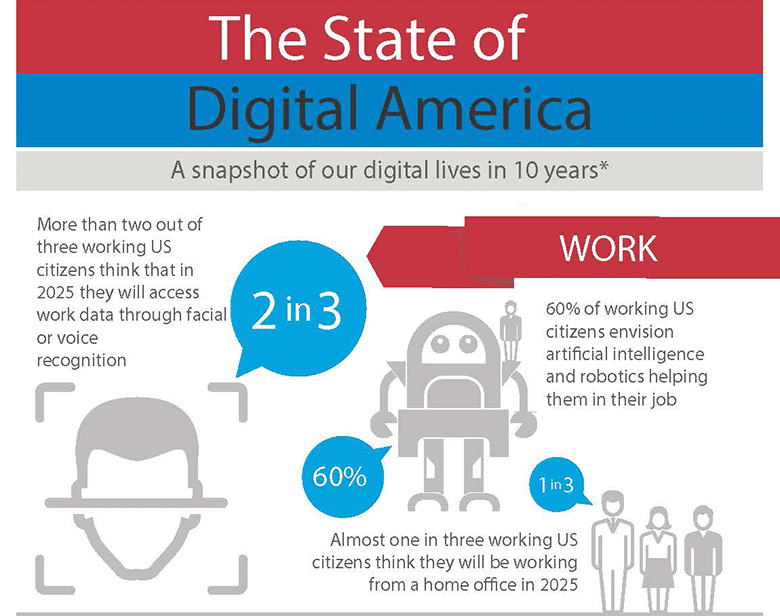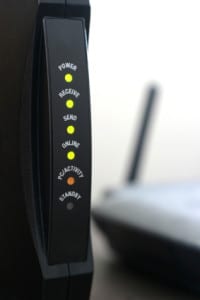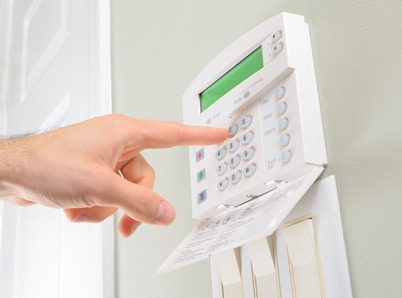A new survey of consumer attitudes and expectations about technology finds that a strong majority of Americans expect wearable technology and biometric security to be common within the next decade. The survey, sponsored by the security company McAfee, asked 1,500 U.S. consumers about lifestyle and technology trends in the home and workplace. The results suggest that consumers are already adjusting their expectations about the future to include pervasive connectivity, a wealth of intelligent devices – and some of the problems that come with both. More than 60% of those surveyed by McAfee said they anticipate having connected appliances like refrigerators that will “automatically add food to a running grocery list if the product is running low.” A strong majority of those polled – 84% – said they were convinced their home security systems will be connected to their mobile device. “As technology, especially the Internet of Things, continues to rapidly advance and […]
home networking
New England IoT: A Conversation Next Week On Cloud, Security and Internet of Things
One of the challenges of talking about security in the context of Internet of Things is that the Internet of Things (IoT) isn’t a discrete technology, but an umbrella phrase that encompasses a lot of separate innovations: mobility, inexpensive sensors, wireless connectivity, Big Data and so on. One of the biggest moving parts in the IoT puzzle is cloud computing. Cloud infrastructure – whether its Amazon’s Elastic Compute Cloud (EC2) or Google or any of the thousands (millions?) of private cloud – is the back end for almost every IoT product. That presents both opportunities and real challenge for companies that are looking to leverage IoT in their workplace. Next week, I’m going to moderate a panel at an event here in Boston where we’ll tackle some of these issues head-on. The event: The Connected Cloud Summit is taking place in Boston on Thursday, September 18 at The State Room in downtown Boston. […]
Compromised Website Used In Attack On SoHo Routers
The folks over at the web security shop Sucuri have an interesting post today that warns of a web-based attack launched from the site of a popular Brazilian newspaper that is targeting home broadband routers. According to Sucuri, researchers investigating a breach at the web site politica . estadao . com . br uncovered evidence that the hackers were using iframe attacks to try to change the DNS configuration on the victim’s DSL router, first by trying a brute force attack on the router’s default credentials. According to Sucuri, the payload was trying to crack default accounts like admin, root, gvt and other common usernames and a variety of known-default router passwords. Small office and home office (or SoHo) broadband routers are an increasingly common target for cyber criminals because many (most?) are loosely managed and often deployed with default administrator credentials. [Read Security Ledger coverage of home router hacks here.] In March, the firm Team Cymru published a report describing a widespread compromise of […]
Time for an Administrator of Things (AoT)? – Security Intelligence Blog
Trend Micro’s Security Intelligence Blog has an interesting post today that looks at the changing demands of networked environments populated by smart “stuff.” Their conclusion: homes and businesses might find increasing need for someone to manage smart devices. “Managing a household full of smart devices calls for the skills of both a multi-user IT administrator and a handyman. Let’s call this role the Administrator of Things (AoT).” As in the early days of business networks, this role is currently ill-defined, Trend notes, with “ordinary users” taking on AoT tasks despite “scant evidence that they are ready for it.” Trend’s Geoff Grindrod doesn’t take a strong position on what the implications of all this complexity. (“This is something that should be looked into,” the report says.) However, he does anticipate friction. “How well people can actually perform (the job of AoT) has a huge impact on their daily lives, which includes the security of their household,” […]
Report: Thieves Can Hack and Disable Your Home Alarm System | WIRED
Wired’s Kim Zetter reports on (independent) reports by two researchers that show how home alarm setups can be hacked remotely, from as far away as 250 yards. The vulnerabilities could allow a malicious actor to suppress alarms or create multiple, false alarms that would render the system unreliable (and really annoying). Zetter profiles the work of Logan Lamb, a security researcher at Oak Hill Ridge National Lab who conducted independent research on three top brands of home alarm systems made by ADT, Vivint and a third company that asked to remain anonymous. She also cites work by Silvio Cesare, who works for Qualys who studied common home alarm systems sold in Australia, including devices manufactured by Swann, an Australian firm that also sells its systems in the U.S. Both discovered a litany of similar problems, Zetter reports: The systems use radio signals to report when monitored doors and windows are opened, but fail to encrypt or authenticate the signals being […]




